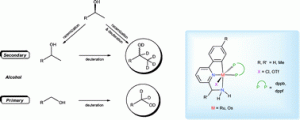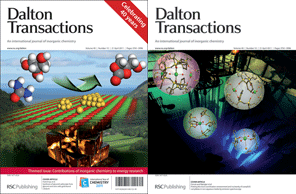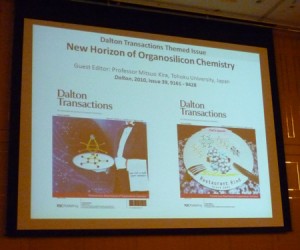 Walter Baratta and colleagues describe the first examples of osmium catalysts used for the racemization and deuteration of alcohols. The group found that diphosphine based pincer complexes based on ruthenium and osmium are are efficient catalysts for the racemization of secondary alcohols and also efficiently catalyze the deuteration of both primary and secondary alcohols.
Walter Baratta and colleagues describe the first examples of osmium catalysts used for the racemization and deuteration of alcohols. The group found that diphosphine based pincer complexes based on ruthenium and osmium are are efficient catalysts for the racemization of secondary alcohols and also efficiently catalyze the deuteration of both primary and secondary alcohols.
Read their HOT article to find out more. This article is free to read for four weeks.
Pincer Ru and Os complexes as efficient catalysts for racemization and deuteration of alcohols
Gianluca Bossi, Elisabetta Putignano, Pierluigi Rigo and Walter Baratta
Dalton Trans., 2011, Advance Article DOI: 10.1039/C1DT10498E
This paper will feature in the forthcoming Pincers themed issue appearing soon – guest editors Professors Gerard van Koten and Bert Klein Gebbink. Look out for the issue when it is published later this summer!





















